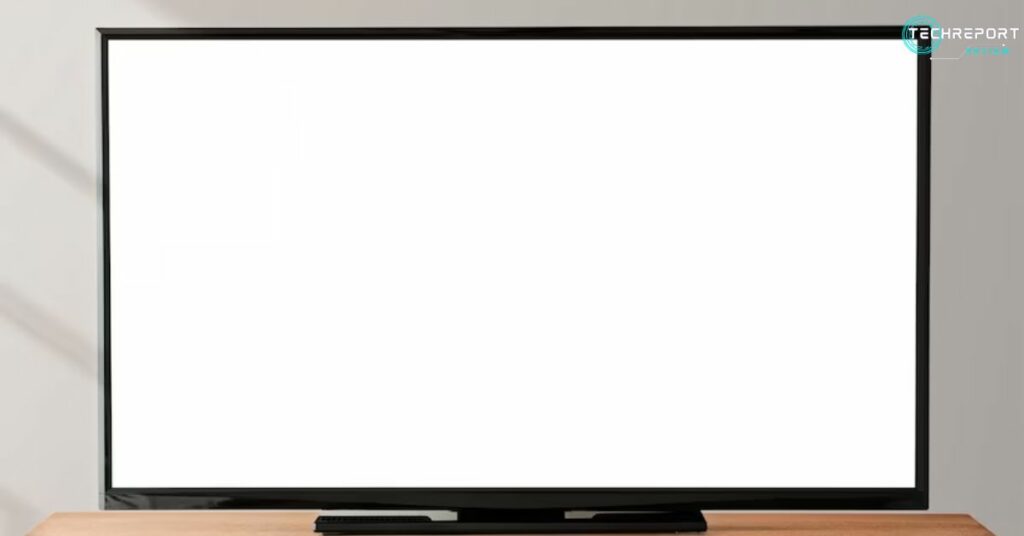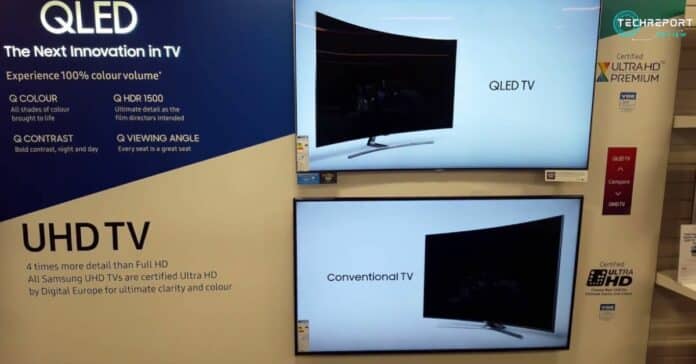A Deep Dive into the UHD vs QLED Debate
UHD, or Ultra High Definition, refers to the resolution of a television screen. It is a term used to describe displays that have a resolution of 3840 x 2160 pixels, which is four times the resolution of Full HD (1920 x 1080 pixels). UHD displays offer a higher level of detail and clarity in images and videos.
QLED, on the other hand, is a technology used in some modern televisions that stands for Quantum-dot Light Emitting Diode. QLED displays use tiny particles called quantum dots to enhance the color accuracy and brightness of the screen.
Choosing a new television can be a daunting task, especially with so many technical terms and acronyms to consider. Understanding the difference between UHD and QLED is essential when it comes to choosing the right TV for your needs. Knowing the advantages and disadvantages of each technology can help you make an informed decision.
In this article, we will explore the differences between UHD and QLED, including their respective technologies, picture quality, viewing angles, color accuracy, price, and more. We will also compare the two technologies side by side, helping you determine which is the better choice for your needs.
What is QLED?

QLED, short for Quantum-dot Light Emitting Diode, is a display technology used in TVs that uses Quantum Dots (QD) to produce vibrant, accurate, and bright colors. It is a newer display technology than UHD and standard HD and is considered to be a more advanced form of LED (Light Emitting Diode) technology.
QLED technology was first introduced by Samsung Electronics in 2017, but it has since been adopted by other TV manufacturers such as TCL, Hisense, and Sony. The technology builds on the strengths of LED/LCD panels and offers an advanced approach to color reproduction.
QLED TVs use quantum dots to produce accurate colors and high contrast, resulting in a more realistic and immersive viewing experience. The technology uses a backlight system to illuminate the quantum dots, and the TV’s processor fine-tunes the color and brightness of each pixel.
In addition to excellent color accuracy, QLED TVs offer high levels of brightness, making them ideal for use in bright rooms. They also have high contrast ratios and wide viewing angles, allowing viewers to enjoy clear images from any position in the room.
QLED offers several advantages over UHD and standard HD TVs. The most significant advantage is its ability to produce more vibrant and accurate colors, thanks to the use of quantum dots. This makes it ideal for watching movies, and TV shows, and playing video games that require excellent color accuracy.
Another advantage of QLED is its high brightness levels, making it ideal for use in bright rooms. The technology also offers high contrast ratios and wide viewing angles, making it perfect for families and large groups of people.
In terms of durability, QLED TVs are known for their longevity, with some models lasting up to 100,000 hours. They also require less maintenance than other TV technologies, making them a cost-effective investment in the long run.
UHD vs QLED: Picture Quality Comparison
When it comes to picture quality, both UHD and QLED TVs offer an impressive viewing experience. However, there are some notable differences between the two technologies.
UHD, also known as Ultra High Definition, is a resolution standard that offers four times the number of pixels as Full HD (1080p). This means UHD TVs can display an image with a resolution of 3840 x 2160 pixels. On the other hand, QLED TVs use UHD resolution but have a layer of quantum dots that helps improve picture quality. Quantum dots are microscopic crystals that produce more accurate and vibrant colors.
One of the main advantages of QLED TVs over UHD TVs is their ability to display more accurate and vibrant colors. Quantum dots technology allows for a wider color gamut, which means that QLED TVs can display more colors than UHD TVs.
QLED TVs have an advantage over UHD TVs when it comes to contrast and brightness. QLED TVs use a layer of quantum dots, which helps improve color saturation and contrast levels. This means that QLED TVs can display deeper blacks and brighter whites than UHD TVs.
Both UHD and QLED TVs support HDR (High Dynamic Range) content, which offers a wider range of colors and higher contrast levels. However, QLED TVs have an advantage over UHD TVs when it comes to HDR support. QLED TVs can display HDR content at a higher brightness level, which means that the highlights in HDR content will appear brighter and more vivid.
QLED TVs have a wider viewing angle than UHD TVs. This means that you can sit at an angle to the TV and still get a clear and detailed picture. UHD TVs have a narrower viewing angle, which means that the picture quality can degrade when viewed from an angle.
In conclusion, while both UHD and QLED TVs offer an impressive viewing experience, QLED TVs have some advantages over UHD TVs when it comes to picture quality. QLED TVs offer more accurate and vibrant colors, deeper blacks, brighter whites, and wider viewing angles. However, UHD TVs are more affordable and still offer great picture quality. Ultimately, the choice between UHD and QLED will depend on your budget and viewing preferences.
UHD vs QLED: Gaming Comparison
Gamers are a significant portion of the TV-buying market, and they need a TV that can keep up with their gaming needs. Here, we will compare UHD and QLED TVs for gaming purposes.
Input lag refers to the time it takes for your TV to display the input from your gaming device. The lower the input lag, the more responsive your TV is. QLED TVs tend to have lower input lag than UHD TVs. This means that QLED TVs can provide a smoother and more responsive gaming experience.
Response time is the time it takes for a pixel to change from one color to another. This is important for fast-moving games, as a slow response time can result in motion blur. QLED TVs typically have faster response times than UHD TVs, which means that they can display fast-moving content with less motion blur.
Motion handling refers to the TV’s ability to display fast-moving content without artifacts such as judder or stutter. QLED TVs tend to handle motion better than UHD TVs, thanks to their faster refresh rates and motion processing technologies.
Both UHD and QLED TVs come with gaming features such as game modes and variable refresh rates. However, QLED TVs tend to have more advanced gaming features, such as FreeSync and G-Sync compatibility, which can provide a smoother and more seamless gaming experience.
In summary, QLED TVs tend to be better suited for gaming purposes than UHD TVs, thanks to their lower input lag, faster response times, better motion handling, and more advanced gaming features. However, UHD TVs can still provide an enjoyable gaming experience for casual gamers.
UHD vs QLED: Price Comparison
When it comes to price, UHD TVs are generally more affordable than QLED TVs. UHD TVs are available at a wide range of prices, from budget-friendly options to high-end models. On the other hand, QLED TVs are typically more expensive than UHD TVs, and the price range is generally higher than that of UHD TVs. However, the price of both UHD and QLED TVs can vary depending on the brand, size, and features.
When considering the value for money, it is important to look beyond just the price of the TV. UHD TVs are generally considered to offer a better value for money than QLED TVs. UHD TVs can provide excellent picture quality and features at a more affordable price point, making them a great choice for those on a budget. On the other hand, QLED TVs can provide superior picture quality and more advanced features, but at a higher price point. Ultimately, the value for money will depend on the individual’s needs and preferences.
In terms of long-term costs, both UHD and QLED TVs can have varying expenses. UHD TVs tend to consume less power than QLED TVs, which can lead to lower electricity bills in the long run. However, it’s important to note that higher-end UHD TVs may consume more power due to their advanced features. QLED TVs, on the other hand, can have a longer lifespan than UHD TVs, which can be a factor to consider when thinking about long-term costs. Additionally, the cost of repairs and replacements can also vary between UHD and QLED TVs.
UHD vs QLED: Brand Comparison
When it comes to purchasing a TV, the brand is an important factor that many consumers consider. In this section, we’ll take a look at the top UHD and QLED TV brands, and compare their reputation and customer satisfaction.
Top UHD TV brands
- Samsung: Samsung is one of the top brands for UHD TVs, offering a range of models with high picture quality, advanced features, and smart functionality. Samsung has been in the TV industry for many years and is known for producing reliable and high-quality TVs.
- LG: LG is another top brand for UHD TVs, offering a range of models with excellent picture quality and smart features. LG is known for its innovative technology and has won multiple awards for its TVs.
- Sony: Sony is a well-known brand for electronics, including TVs. The company offers a range of UHD TVs with excellent picture quality, smart features, and advanced technology. Sony is known for its attention to detail and high-end products.
Top QLED TV brands
- Samsung: Samsung is the top brand for QLED TVs, offering a range of models with advanced features, excellent picture quality, and smart functionality. Samsung has been a leader in QLED technology and continues to innovate in the TV industry.
- LG: LG is also a top brand for QLED TVs, offering a range of models with excellent picture quality and advanced features. LG is known for its innovative technology and high-quality products.
- Sony: Sony also offers QLED TVs, with a range of models that offer excellent picture quality, smart features, and advanced technology. Sony is known for its attention to detail and high-end products.
Samsung is a top brand for both UHD and QLED TVs and has a reputation for producing high-quality products with advanced features. LG is also known for its innovation and high-quality products, but may not have the same level of brand recognition as Samsung. Sony is a well-known brand for electronics, but may not be as popular for TVs as Samsung or LG.
In terms of customer satisfaction, Samsung and LG both have high ratings from consumers for their UHD and QLED TVs. Sony also has a good reputation for its UHD and QLED TVs. But may not have as many reviews available as Samsung and LG.
When choosing between UHD and QLED. It’s important to consider the reputation and customer satisfaction of the brand. As well as the specific features and picture quality of the TV models being compared.
UHD vs QLED: Availability Comparison
The market for UHD and QLED TVs is highly competitive, with many manufacturers producing a variety of models. Both types of TVs are widely available from major retailers, such as Amazon, Best Buy. And Walmart, as well as specialty electronics stores.
The availability of UHD and QLED TVs can vary by region. In general, both types of TVs are widely available in North America, Europe, and Asia. However, availability may be more limited in some regions. Such as Africa or South America, where demand for high-end TVs may be lower.
Both UHD and QLED TVs are available in a range of screen sizes and models to suit different needs and budgets. Screen sizes typically range from 40 inches to over 80 inches, with larger screens typically commanding higher prices. Some manufacturers offer curved screen models for a more immersive viewing experience. Additionally, many models offer features such as built-in speakers, smart TV capabilities, and voice control.
UHD vs QLED: Mounting and Installation Comparison
When it comes to mounting and installation, both UHD and QLED TVs have their unique features and requirements. Here’s a comparison of the mounting and installation factors to consider before purchasing either of them.
Both UHD and QLED TVs have different mounting requirements based on their size, weight, and design. UHD TVs typically use a VESA (Video Electronics Standards Association) mount. Which is a standard mounting system that is compatible with most wall mounts available in the market. On the other hand. QLED TVs may require a specific wall mount that is designed for their unique size and shape.
Before purchasing a wall mount, it’s important to check the specifications of your TV to ensure compatibility. In addition, some QLED TVs have a curved design, which may require a special curved wall mount.
The installation process for both UHD and QLED TVs can vary based on the manufacturer and model. However, most modern TVs are designed to be easy to install and come with detailed instructions.
UHD TVs are generally easier to install since they have a standard VESA mount that can be easily attached to the wall. QLED TVs may require more attention during the installation process due to their unique design and size. Some QLED TVs may also require an additional mounting bracket or adapter, which can make the installation process more complicated.
Both UHD and QLED TVs require regular maintenance to ensure their longevity and optimal performance. This includes cleaning the screen, checking for firmware updates, and addressing any issues that may arise.
When it comes to support, both UHD and QLED TVs are backed by their respective manufacturer’s warranties and customer support. However, it’s important to check the warranty terms and conditions before purchasing a TV. As they can vary based on the manufacturer and model.
Overall, the mounting and installation process for UHD and QLED TVs is similar. With some differences in compatibility and installation requirements. When it comes to maintenance and support. Both types of TVs require regular care, with warranty and customer support available from their respective manufacturers.
In Crux
In this article, we compared UHD and QLED technologies for TVs. We explored the differences in picture quality, gaming performance, price, brand, availability, and mounting and installation. Here is a quick recap of the key points:
- UHD stands for Ultra High Definition, and QLED stands for Quantum Dot Light Emitting Diode.
- QLED TVs use quantum dots to produce more accurate and vibrant colors. While UHD TVs offer higher resolution and better upscaling technology.
- QLED TVs generally offer better contrast and brightness than UHD TVs, but UHD TVs have better viewing angles.
- QLED TVs tend to have lower input lag and faster response time than UHD TVs, making them better for gaming.
- The price of UHD and QLED TVs varies, with UHD TVs generally being more affordable than QLED TVs.
- When it comes to brand reputation and customer satisfaction, there are several top UHD and QLED TV brands to consider.
- The availability of UHD and QLED TVs varies by region and by model.
- Mounting and installation requirements for UHD and QLED TVs are generally similar, but it’s important to check compatibility before purchasing.
Choosing between UHD and QLED ultimately comes down to personal preference and intended use. If you prioritize resolution and viewing angle, UHD may be the better choice for you. If you prioritize color accuracy and contrast, QLED may be the better choice. If you plan to use your TV for gaming. QLED may be the better choice due to its faster response time and lower input lag. However, it’s worth noting that UHD TVs can also support gaming and provide an excellent gaming experience.
Both UHD and QLED technologies are expected to continue to advance and improve in the future. As the demand for higher resolution and better color accuracy increases. Manufacturers will likely continue to innovate and push the boundaries of what’s possible. It’s also possible that new technologies will emerge in the coming years that could surpass both UHD and QLED in terms of picture quality and performance. Only time will tell what the future holds for TV technology.
How much did you like Our detailed A Deep Dive into the UHD vs QLED Debate? Review Also, please share these Blogs with your friends on social media.
Related Blogs
[WPSM_AC id=923]

























